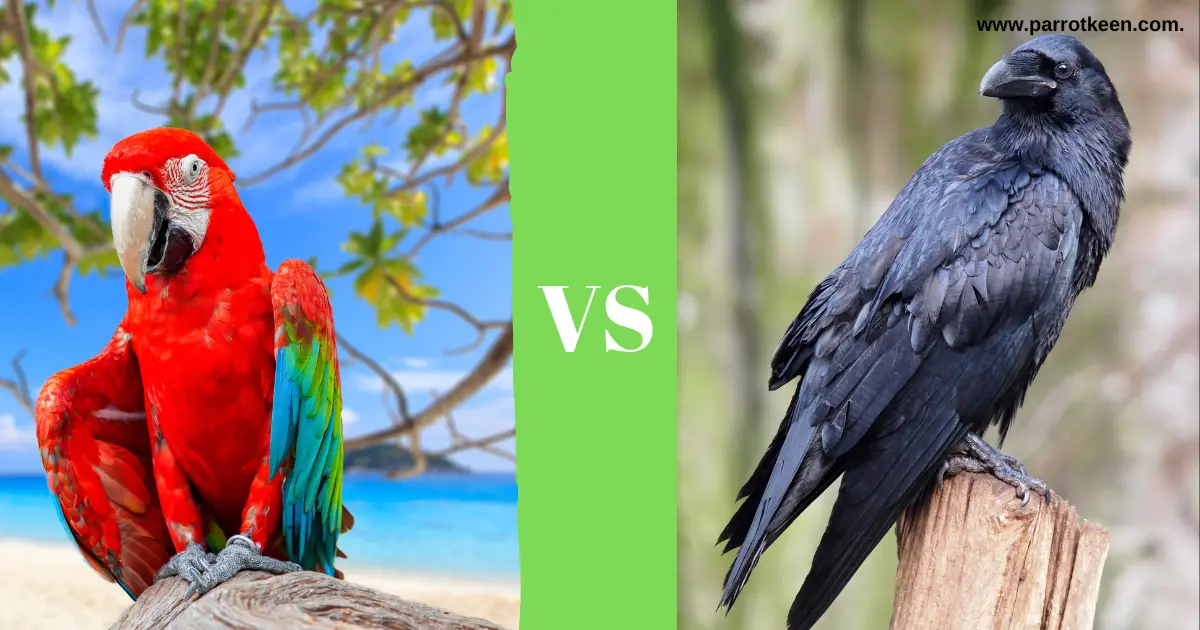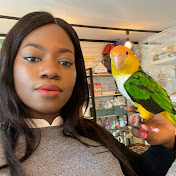![Can Ravens Talk [Answered!]](https://parrotkeen.com/wp-content/uploads/2022/09/Can-Ravens-Talk.jpg)
Can ravens talk? This is a question that many bird lovers ask. It is important to ask because many people compare ravens and parrots in terms of talking ability.
So, can the ravens talk? In this blog post, we will answer the question and explain everything you will need to know about ravens talking.
Among birds, ravens are among the best communicators in the world. Even while ravens can mimic words and phrases, they are more likely to do so if they’re close to humans. This may be because they are housed in popular tourist destinations such as zoos and wildlife centers.
Because of their large vocabulary, raven, and parrots are held in high regard as the best-talking birds.
They can better imitate sounds like car alarms and animal calls than any other bird. The syrinx, their vocal organ, allows them to make noises.
Ravens are a separate family of birds from parrots, even though both are birds. The order Psittaciformes includes parrots, while the corvid order includes ravens.
They do have similar skills to communicate verbally, however, and they’re among the most intellectual birds, with corvids coming out on top in terms of total intelligence.

Can Ravens Talk?
To answer this very important question, Yes ravens can talk. As with humans, ravens and parrots have similar neural networks to those of us. The cerebellum and cortex are present in both birds.
Voluntary motor functions are controlled by the cerebellum, whereas the cortex is responsible for the following:
- Memory
- Language
- Perception
- Sensory information
The medial spiriform neural circuit connects the two areas of the brain. The cerebellum and cortex are linked via a neural highway that enables both bird species to:
- Talk like us
- Mimic words, phrases, and sounds
- Communicate
However, even though ravens and parrots lack the teeth, lips, and vocal cords that allow humans to talk, they still retain the ability to communicate because they have a syrinx, not a larynx (the human voice box).
They have two portions to this fluid-filled organ, which is located at the base of the trachea in their chests and is capable of changing shape.
To produce sound, each component can be moved separately. The muscles and valves in the syrinx vibrate and make noise as air is pushed through the syrinx.
Avian tongues can modulate sound frequency, according to a study published in Current Biology.
“Lingual articulation” is the term for this action. Even though they don’t have a tongue like humans, birds such as parrots and ravens generate sound with their beaks.
The syrinx of all birds is unique to each species. So, the internal organs of parrots and ravens may differ slightly. As in the case of humans, both species copy noises they hear rather than speak.
Because they sound so much like familiar sounds, we tend to imagine that ravens and humans are capable of “talking.”
Are Ravens and Parrots Related?

In the order of birds, both ravens and parrots belong, yet they are classified differently.
These birds include ravens, crows, rooks, jackdaws, treepies, and jays.
True parrots, Strigopoidea (New Zealand parrots), and Cacatuoidea make up the 398 species of Psittaciformes (cockatoos).
Ravens, which have longer, straighter beaks, produce a different sound than parrots, which have shorter, hookbill-shaped beaks. They also look notably different.
Is It Possible for Ravens to Talk Like Parrots?
Yes, it is possible for ravens to talk like parrots. In fact, a raven can be taught to speak more fluently than a parrot.
In zoos and wildlife centers, ravens who spend a lot of time around humans can acquire a vocabulary of about 100 words or more, according to various rules. Ravens in the wild are less likely than parrots or captive ravens to communicate verbally.
Similarly, not all ravens and parrots are born with the ability to communicate verbally, as is the case with humans. Even though many can, it all comes down to their personality and how they interact with other people. Parrots are better at talking than most ravens because they are more regularly kept as pets.
As if that weren’t enough, ravens can replicate a wide variety of noises, including:
- Animal calls
- Dog barks
- Sirens
- Car alarms
- Beeps
A wide range of vocalizations, ranging from gentle gurgling to piercing screeches, are employed by these birds.
It’s the gurgling croak from the back of the throat that’s the most typical sound ravens make. Over a mile away, this raven can be heard making this call in response to other ravens.
These aren’t the only noises ravens make, either. To frighten predators away, they make short, repetitive shrieks and harsh, rasping cries when their nests are disturbed.
Their other noises include:
- Deep rasping calls
- Rapid knocking noises
- Bill snapping
- Singing
Even though ravens are excellent talkers, their capacity to make a wide range of noises is superior. More than any other bird, including ravens, the African grey parrot can mimic up to 1,000 syllables.
According to word count, the following birds have vast vocabularies as well:
- Budgies: 1,000 words
- Amazon parrots: 300 words
- Indian ring parakeets: 250 words
- Cockatiels: 250 words
Ravens and parrots have similar speaking abilities when compared, but parrots are better known for their abilities due to this.
Are Ravens or Parrots Smarter?
An IQ test for animals does not exist because there is no standard IQ test for animals.
Comparison of cognitive levels can only be made by giving the identical job to both parrots and ravens and tracking their outcomes.
Discover Magazine reports that a University of Vienna researcher challenged a group of parrots and corvids to solve puzzles to win food placed in a plastic container.
They could accomplish this in four ways:
- Pulling the food’s string
- Opening a window and putting their head in the box
- Using a stick to push the food out of the way.
- Making use of a pebble to knock food from a chute and away
To keep the birds from getting their hands on food, the researcher closed off one of the tricks each time they learned it.
Findings from a study on corvids indicated that they were slower to learn the alternative solutions because they used their beaks to investigate the plastic box more cautiously.
Parrots, on the other hand, found the answers more rapidly, but they were considerably more aggressive in their approach.
Even if this were the case, neither species would be superior in intelligence. Rather, it demonstrates that people approach tasks differently. Both of them were able to complete the work to the same degree of accomplishment.
African grey parrots are widely regarded as the most intellectual parrots due to their outstanding communication skills. Ravens, along with crows, are well-known for their intelligence, and with good reason.
Scientific journals report that ravens can plan and control their actions in the same way as big apes and tiny children.
Ravens are also capable of the following abilities:
- Using hand gestures is a good way to communicate.
- Adapt to different environments by showing empathy towards each other
- Participate in a gang as a teen
As of yet, no parrot has succeeded in the mirror test. The Eurasian magpie, a member of the corvid family, is the only non-mammal that has survived. Neither have ravens. Even primates haven’t been able to accomplish this.
Conclusion: Can Ravens Talk?
Because of their proximity to humans, ravens have the potential to speak more fluently than parrots.
Both species can generate sounds that humans can identify, making them among the most intelligent creatures on the planet.

Hi, I am Thersa and Welcome to ParrotKeen, your number one place to get all the information you need about your cute parrot. I hope You Find it useful.
